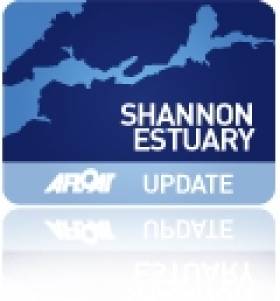Displaying items by tag: Cahercon
#shannonestuary – Clare County Council says the zoning of more than 345 hectares of land along the Shannon Estuary will give 'greater investor confidence' for anyone considering large-scale marine related development proposals.
The Council's 28 Elected Members last evening (Monday) unanimously backed the move to incorporate the zoned lands into the Clare County Development Plan 2011-17 along with the Strategic Integrated Framework Plan (SIFP) for the Shannon Estuary, a major strategic plan for the future development and management of marine-related industry and tourism along Ireland's largest estuary.
The newly zoned lands relate to Strategic Development Locations (SDL) at Cahercon and Moneypoint where existing pier facilities and deep estuarial water provide potential for maritime industry investment.
Clare County Council says it would welcome any opportunity to discuss suitable development proposals for the locations.
A new working group has also been established to promote and market the sites and wider Estuary as a key investment location. Led by Clare County Council, the group also comprises the IDA, Shannon Group plc, Shannon Foynes Port Company, Kerry County Council, and Limerick City and County Council.
"The zoning of lands at Cahercon and Moneypoint complements the vision of both the SIFP and the Clare County Development Plan, and will deliver greater investor confidence," stated Tom Coughlan, Chief Executive of Clare County Council and Chairman of the SIFP Steering Group.
He explained: "While the SIFP attributes a very strong weight to the growth of shipping and safeguarding the commercial shipping lanes of the Shannon Estuary, it also contains objectives for marine tourism, leisure and recreation, commercial fishing and aquaculture, aviation, and energy and renewable energy. The Council's decision to zone 345 hectares of land is significant in the context of being able to widely promote these new development opportunities. The IDA's marketing of the estuary's development potential alongside other key development agencies in Clare, Kerry and Limerick is very much welcomed."
"The Council would welcome any opportunity to meet potential investors to discuss suitable development proposals, particularly in relation to marine industry, for the sites in question," added Mr. Coughlan.
Commenting on the background to the zoning of lands along the Shannon Estuary, Clare County Council's Senior Planner Gordon Daly said: "Clare County Council, through the zoning of these lands and the County Development Plan, is seeking to build on the strategic location and natural resources of the Estuary by facilitating and maximising its potential for marine-related industry development while at the same time managing and protecting its environment in conformance with the requirements of the Habitats & Birds Directives."
Moneypoint SDL comprises approximately 280 hectares is located on the Shannon Estuary 5km east of Kilrush. The landbank also includes one of Ireland's largest electricity generation stations.
Mr. Daly commented: "The marine related industry zoning recognises the importance of the existing Moneypoint Power Plant Facility and facilitates its expansion and/or redevelopment. It also includes over 50 hectares of lands to the east of the Power Plant not in the ownership of the ESB that could further harness the deepwater potential in this area which has excellent road access and is close to the town of Kilrush and the Killimer-Tarbert Ferry."
The Innismurry / Cahercon SDL meanwhile, comprises approximately 66 hectares of land
"This area has potential for development of marine related industry due to a well-sheltered location with an existing pier offering direct access to a large pocket of well sheltered deep water and the main navigation channel. It also has a considerable area of hinterland available and is in close proximity to the R473," explained Mr. Daly.
Mr Daly also confirmed that the zoning for Marine Related Industry only allows for the use of land for industry that, by its nature, requires a location adjacent to estuarine/deep water including a dependency on marine transport, transhipment, bulk cargo or where the industrial processes benefit from a location adjacent to the marine area.
The Shannon Estuary features 500km2 of navigable water running from Loop Head and Kerry Head as far as Limerick City, a distance of 100km. The Estuary is Ireland's premier deepwater port, routinely catering for ships up to 200,000 deadweight tonnage, with key ports at Limerick and Foynes. It is home to a number of large industries and employers, including ESB Moneypoint, Aughinish Alumina, Tarbert Power Station, Shannon Airport and NORA Fuel Reserve. Meanwhile, the Estuary supports a variety of economic uses but is also rich in natural resources, wildlife and ecosystems.























